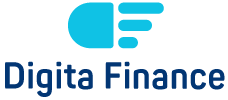Digital finance tools represent the technological backbone of modern financial management. These software solutions have revolutionized how businesses handle everything from basic bookkeeping to complex financial analysis and strategic planning.
The transformation from traditional paper-based systems to digital platforms has created unprecedented opportunities for accuracy, efficiency, and real-time financial insights. Companies now access their financial data instantly, make informed decisions faster, and maintain better control over their monetary resources.
These tools encompass a broad spectrum of applications designed to address specific financial needs. From small business accounting software to enterprise-level financial planning systems, the digital finance ecosystem offers solutions for organizations of every size and complexity.
Core Categories of Digital Finance Tools
Accounting software forms the foundation of most digital finance ecosystems. These platforms automate transaction recording, generate financial statements, and ensure compliance with accounting standards. Modern accounting tools integrate seamlessly with banking systems, automatically categorizing transactions and reducing manual data entry.
Payment processing solutions have transformed how businesses collect money from customers. Digital payment platforms support multiple payment methods, provide fraud protection, and offer detailed transaction analytics. These systems enable businesses to accept payments globally while maintaining security standards.
Budgeting and forecasting applications help organizations plan their financial future. These tools analyze historical data, identify spending patterns, and project future cash flows. Advanced forecasting platforms incorporate market trends and economic indicators to provide more accurate predictions.
Investment management platforms cater to businesses looking to optimize their capital allocation. These tools provide portfolio analysis, risk assessment, and performance tracking capabilities. Integration with market data feeds ensures investment decisions are based on current information.
Benefits of Implementing Digital Finance Tools
Automation stands as the primary advantage of digital finance tools. Manual processes that once required hours of work now complete in minutes. This efficiency gain allows finance teams to focus on strategic analysis rather than routine data entry tasks.
Real-time visibility into financial performance enables better decision-making. Business leaders can access current financial metrics, identify trends quickly, and respond to changing conditions before they become critical issues. This immediate access to information provides significant competitive advantages.
Accuracy improvements result from reduced human intervention in routine calculations. Digital tools eliminate common errors associated with manual processes, ensuring financial records remain reliable and audit-ready. Built-in validation rules catch potential mistakes before they affect financial statements.
Cost reduction occurs through multiple channels when organizations adopt digital finance tools. Reduced paper usage, eliminated manual processes, and improved efficiency combine to lower operational expenses. Many businesses recover their technology investment within the first year of implementation.
Essential Features to Consider
Cloud-based accessibility ensures finance teams can work from anywhere while maintaining data security. Modern digital finance tools offer robust mobile applications that provide full functionality on smartphones and tablets. This flexibility becomes crucial for businesses with remote teams or multiple locations.
Integration capabilities determine how well digital finance tools work within existing technology ecosystems. The best platforms connect seamlessly with banking systems, customer relationship management software, and business intelligence tools. These connections eliminate data silos and provide comprehensive business insights.
Security features protect sensitive financial information from unauthorized access and cyber threats. Advanced encryption, multi-factor authentication, and regular security updates safeguard financial data. Compliance with industry standards ensures businesses meet regulatory requirements.
Scalability allows digital finance tools to grow alongside business expansion. Systems that accommodate increasing transaction volumes, additional users, and new functionality prevent the need for costly platform migrations as companies develop.
Popular Digital Finance Tool Categories
Enterprise resource planning systems integrate financial management with other business operations. These comprehensive platforms connect accounting, inventory management, human resources, and customer management into unified systems. Large organizations benefit from the holistic view these tools provide.
Banking and cash management platforms help businesses optimize their liquidity and banking relationships. These tools provide cash flow forecasting, automated bank reconciliation, and treasury management capabilities. Multi-bank connectivity streamlines account management across different financial institutions.
Expense management solutions automate the process of tracking and approving business expenses. Employees can submit expense reports through mobile applications, while managers receive automated approval workflows. Integration with accounting systems ensures expenses are properly categorized and recorded.
Tax preparation software simplifies compliance with complex tax regulations. These tools automatically calculate tax obligations, generate required forms, and ensure deadlines are met. Integration with accounting data eliminates manual data transfer and reduces preparation time.
Implementation Strategies for Success
Proper planning ensures successful digital finance tool implementation. Organizations should assess their current processes, identify pain points, and define clear objectives before selecting technology solutions. This preparation helps match tool capabilities with actual business needs.
Data migration requires careful attention to maintain accuracy and completeness. Historical financial information must transfer correctly to new systems while maintaining data integrity. Professional implementation services often prove valuable for complex migrations.
User training determines how quickly teams adapt to new digital finance tools. Comprehensive training programs should cover both basic functionality and advanced features. Ongoing support helps users maximize tool capabilities and maintain productivity during transitions.
Change management addresses the human aspects of technology adoption. Clear communication about benefits, expectations, and timelines helps overcome resistance to new systems. Involving key users in selection and implementation processes increases acceptance rates.
Measuring Digital Finance Tool Success
Key performance indicators help organizations evaluate the effectiveness of their digital finance investments. Metrics such as processing time reduction, error rate improvements, and user satisfaction scores provide objective measures of success.
Return on investment calculations should consider both direct cost savings and indirect benefits. Time savings, improved accuracy, and enhanced decision-making capabilities contribute to overall value creation. Regular reviews ensure tools continue meeting evolving business needs.
User adoption rates indicate how well digital finance tools integrate into daily workflows. High adoption suggests tools meet user needs effectively, while low usage may indicate training gaps or functionality issues. Monitoring usage patterns helps identify optimization opportunities.
Process improvement opportunities often emerge after digital finance tool implementation. Organizations can streamline workflows, eliminate redundant steps, and enhance overall efficiency. Continuous improvement ensures maximum value from technology investments.
Future Trends in Digital Finance Tools
Artificial intelligence integration promises to enhance digital finance tool capabilities significantly. Machine learning algorithms can identify spending patterns, predict cash flow needs, and detect fraudulent transactions automatically. These advanced features will become standard in next-generation platforms.
Blockchain technology offers new possibilities for transaction security and transparency. Smart contracts could automate payment processes, while distributed ledgers provide tamper-proof audit trails. These innovations may reshape how businesses handle financial transactions.
Open banking standards enable better integration between different financial service providers. Digital finance tools will leverage these connections to provide more comprehensive financial management capabilities. Enhanced data sharing will improve forecasting accuracy and streamline operations.
For expert guidance on selecting and implementing the right digital finance tools for your organization, visit digitafin to discover how professional consulting services can accelerate your digital transformation journey.
Digital finance tools have become indispensable for modern business operations. Organizations that embrace these technologies gain significant advantages in efficiency, accuracy, and strategic insight, positioning themselves for sustained success in an increasingly competitive marketplace.








How Fintech APIs Enable Faster Product Launches and Scalable Financial Innovation?
Green Finance and Fintech: Driving Sustainable Investments with Technology
Cybersecurity in Digital Finance: A Guide to Asset Protection
AI in Wealth Management: How Artificial Intelligence is Reshaping Finance
Digital Twin Technology in Finance: How Virtual Models Are Transforming Risk Management
The Future of Personal Finance: Autonomous Finance and AI Money Management
AI Credit Scoring: Revolutionizing SME Banking and Digital Loans
AI Fraud Detection: How Banks Prevent Financial Crime in Real Time